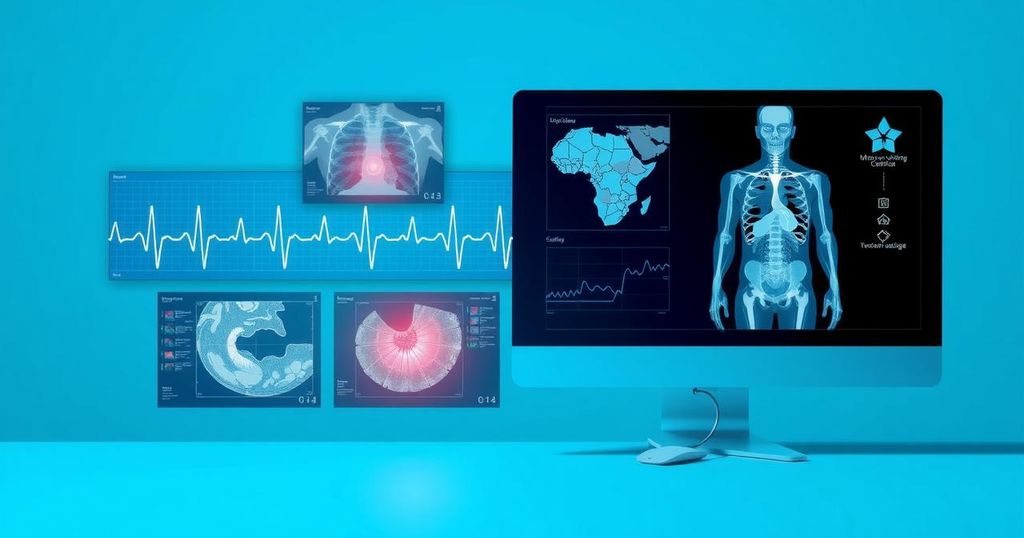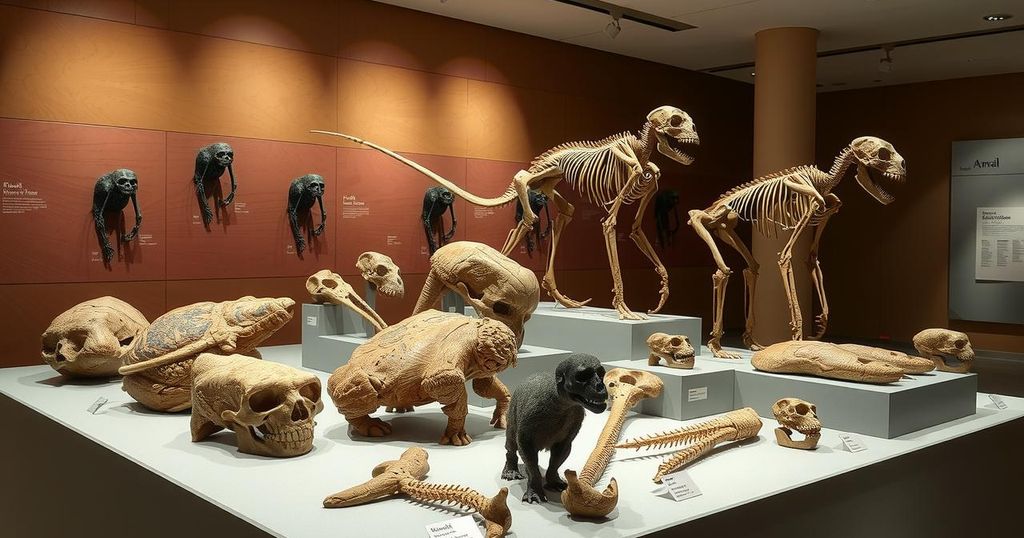Google’s AMIE: A Game-Changer for AI in Medical Diagnostics
Google has unveiled AMIE, an AI designed to interpret medical images, redefining digital health consultations. This innovative technology could enhance diagnostic accuracy by allowing doctors to assess visual information as part of patient interactions. Early studies show AMIE may even outperform human doctors in some scenarios, but more research is needed to ensure real-world application.
Google is reinventing the way AI can assist in healthcare. The tech giant just launched AMIE, which stands for Articulate Medical Intelligence Explorer, enhancing its diagnostic AI. This new research opens up exciting possibilities, allowing AIs to actually ‘see’ medical images, not just chat about symptoms. Imagine discussing a rash and having the AI interpret the image right alongside the conversation; that’s the future Google envisions.
Previously, we had a glimpse of AMIE’s potential in text-based dialogues, as highlighted in research published in Nature. But anyone in the medical field knows that visual information, from skin conditions to machine readings, plays an enormous role in diagnostics. The Google team pointed out that even basic messaging allows sharing images and documents which enrich discussions, showcasing how text-only AI was somewhat lacking.
The Google engineers have now ramped up AMIE’s capabilities by utilizing the sophisticated Gemini 2.0 Flash model, embedding something they term a “state-aware reasoning framework.” In simpler terms, this AI doesn’t just respond in pre-set patterns—it adjusts its interaction based on ongoing conversation and what it still needs to uncover. It mimics a human doctor’s process: gather information, think things through, then ask for specific inputs like visual evidence to clarify and narrow down the diagnosis.
Take a moment to visualize how that conversation unfolds: first, AMIE collects the patient’s history, then dives into diagnostic suggestions, and eventually moves on to management strategies, always reassessing its understanding along the way. If it feels something is missing, it might ask for that lab result or a photo of the rash to fill in the gaps. This method enhances the dialogue and promotes more precise diagnoses.
To ensure its chat capabilities are robust without risking real patients, Google set up a detailed simulation lab. Here they created realistic patient scenarios, using data like ECG readings and dermatology images, complete with plausible backstories crafted by Gemini. AMIE was then tested in these setups to assess its diagnostic accuracy and pinpoint any potential errors or ‘hallucinations.’
Google decided to really push AMIE to its limits through a format familiar to medical students—the Objective Structured Clinical Examination (OSCE). They ran a study that involved 105 different medical scenarios, where real actors posed as patients and interacted either with AMIE or actual primary care physicians. Through a chat interface that allowed image upload, it was like something out of a sci-fi medical drama.
After these interactions, specialists in dermatology, cardiology, and internal medicine reviewed how each conversation played out. They scored everything: the quality of the history taking, diagnostic accuracy, management plans, communication skills, not to mention how well the AI interpreted visual data. The results? Well, they were quite the surprise.
AMIE didn’t just keep pace with the human doctors; often, it surpassed them. In fact, the AI fared better than its human counterparts at interpreting complex multimodal data. It received higher ratings for delivering accurate differential diagnoses, impressing specialists with its thoroughness. Even more shocking, patients interacting with AMIE reported feeling a greater sense of empathy and trust compared to their human doctors!
And here’s a critical safety note to ponder: AMIE did not show any significant difference in error rates when interpreting visual information compared to the human doctors. Google also explored further refinements by testing a newer version of its model, Gemini 2.5 Flash. Early indications suggest better performance and accuracy in real-time scenarios, a promising avenue for future development.
But hang on a second! Before getting carried away with the possibilities, Google is cautious to remind everyone of the study’s limitations. They emphasized that this is merely a research system and doesn’t capture the chaos of real-world patient care. Simulated scenarios are just that, simulations—they don’t replace the many layers of complexities real patients bring into a bustling clinic.
So, what’s next for AMIE? Google is cautiously moving toward applying AMIE in clinical settings, partnering with Beth Israel Deaconess Medical Center for real-world studies with patient consent. Moreover, researchers realize the need to integrate real-time video and audio into their interface, which reflects the dynamic nature of today’s telehealth environment.
The ability for AI to visually interpret medical evidence brings us closer to a future where AI supports healthcare practitioners and patients alike. Nonetheless, transitioning from these promising simulations to a reliable tool in everyday medicine is a winding road that requires careful planning and execution.
In summary, Google’s AMIE represents a significant leap in AI’s potential to assist healthcare providers by interpreting visual medical data alongside patient interactions. The study reflects promising results, as AMIE often outperformed human doctors in diagnostic accuracy and empathy, although there are notable limitations to acknowledge. Moving forward, real-world tests are essential to refine this technology further and ensure its safety and efficacy in clinical practice. The future of AI in medicine looks intriguing, but it’s clear that successful integration demands thorough evaluation and caution as it emerges from simulations into real healthcare scenarios.
Original Source: www.artificialintelligence-news.com




Post Comment